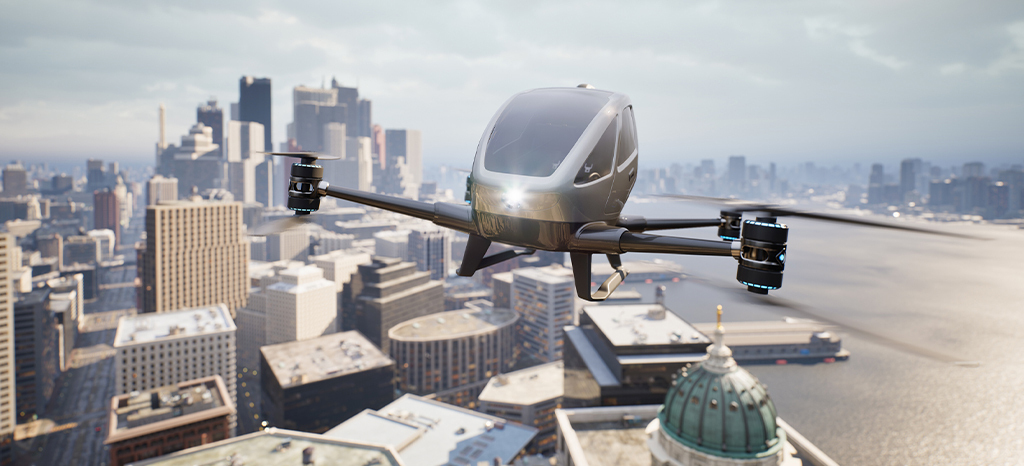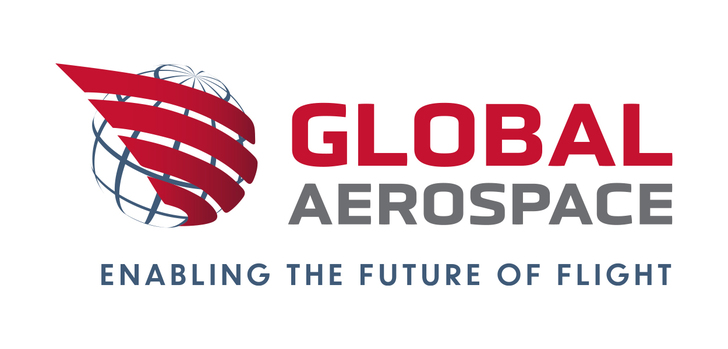Many industry observers predict 2024 to be a pivotal year for pioneers of electric vertical take-off and landing (eVTOL) vehicles seeking to create the Urban Air Mobility (UAM) market. With capital becoming harder to raise and the path to certification still challenging, consolidation might begin among the 500 or so companies aiming to bring electric aircraft services to fruition.

At the same time, as some companies edge closer to beginning flight services, the question of exactly what the passenger experience will look like comes into sharper focus.
Chief among the benefits targeted for potential travelers is time-saving. A McKinsey & Company survey on consumers’ views on UAM in 2021 found that 35% of U.S. travelers prioritized saving time over anything else, with 47% of Brazilian travelers highlighting the same. This may indicate that ground transportation issues are key to creating a worthwhile alternative. In a distant second place for U.S. passengers, with only 15%, was the novelty factor of flying in a eVTOL.
How Can Time Be Saved for a Downtown-to-Airport Connection?
At a December 2023 event in New York City designed to bring attention to the city’s bona fides as fertile ground for urban air transport and seek bids to develop the Downtown Manhattan Heliport, NYC Mayor Eric Adams cited safety and sustainability among the critical objectives. Those familiar with the geography of Manhattan and the traffic issues associated with its connections to major local airports will appreciate the potential benefits UAM will bring in avoiding ground traffic, too.
What Does True Convenience Look Like for UAM?
More affluent travelers, likely to be early adopters of services, typically take a ride share or car service directly from their home or place of work to their local airport. Having navigated security and purchased a cup of coffee, arrival at the departure gate 20 to 30 minutes after reaching the airport is achievable.
While UAM companies understand the need for point-to-point services well, achieving or exceeding the same level of convenience will require truly connecting urban transportation networks with on-airport vertiports. Locating vertiports at existing airports sounds easy, but the proximity of the vertiport to the passenger’s terminal and gate will be essential. If ATC or other constraints require the eVTOL to land at a remote corner of the airport and passengers to use a bus service that connects to the non-airside part of security, the time saved by the flight might be negated.
On the other hand, clearing security quickly at the downtown hub before boarding an aircraft that takes you within a short walk of your gate will create just the kind of value that passengers will likely come back for again.
A final word on convenience. Regular users of ride-share apps often cite ease of use as the reason they have switched from taxis in the last decade. In most cities today, a clean car is at your door within minutes of booking. To achieve close to the same levels of convenience, UAM operators will need to maintain regular and dependable schedules.
When considering comfort, designers must consider how to make the experience as passenger-centric as possible. The Gilmore Group have done significant research into this. In one study, more passengers expressed “extreme concern” about the lack of a flight attendant than the absence of an onboard pilot. The same report found that passengers were more concerned about the prospect of being seated face-to-face with other passengers than the prospect of flying in an all-electric aircraft.
Highlighting travelers’ expectations of seating and service, this study suggests that eVTOL operators will need to understand and account for these issues to achieve success with early adopters, likely to be regular travelers with well-established expectations.
Layer onto that the need to provide easy and safe boarding and egress, access for disabled passengers and space for more than just carry-on luggage, and the challenge for engineers and designers is clear. Much of the efficiency will be lost if passengers must send their golf clubs or larger suitcases to the airport by car.
How Does the Cost Factor In?
The 2021 McKinsey report explored consumer willingness to pay more for UAM than their current modes of airport transport. It found that 16% of Americans were prepared to spend five times the cost of their regular ground transportation. That figure rises to 30% of Brazilians and 36% of Indians, perhaps speaking to congestion in large cities in those countries. Germany ranked lowest in terms of consumers willing to pay more, which might have more to do with their existing efficient ground transport systems than cost.
Unlocking potential might have more to do with identifying markets based on demographics, need and accessibility than pure cost. In the early days of operation, the price of a trip is unlikely to be such an issue with exclusivity and novelty factor creating early demand. Cost will be increasingly relevant as operations scale and expand to additional markets, as will convenience and passenger comfort.
The Future of UAM Is Bright
With UAM set to become a reality in the next few years, it will be fascinating to see how day-to-day services materialize. The future of urban flight is exciting and right around the corner!
About Global Aerospace
Global Aerospace has a century of experience and powerful passion for providing aviation insurance solutions that protect industry stakeholders and empower the industry to thrive. With financial stability from a pool of the world’s foremost capital, we leverage innovative ideas, advanced technology and a powerful synergy among diverse team members to underwrite and process claims for the many risks our clients face. Headquartered in the UK, we have offices in Canada, France, Germany, Switzerland and throughout the United States. Learn more at https://www.global-aero.com/
Global Aerospace Media Contact
Suzanne Keneally
Vice President, Group Head of Communications
+1 973-490-8588
Release ID: 924603

